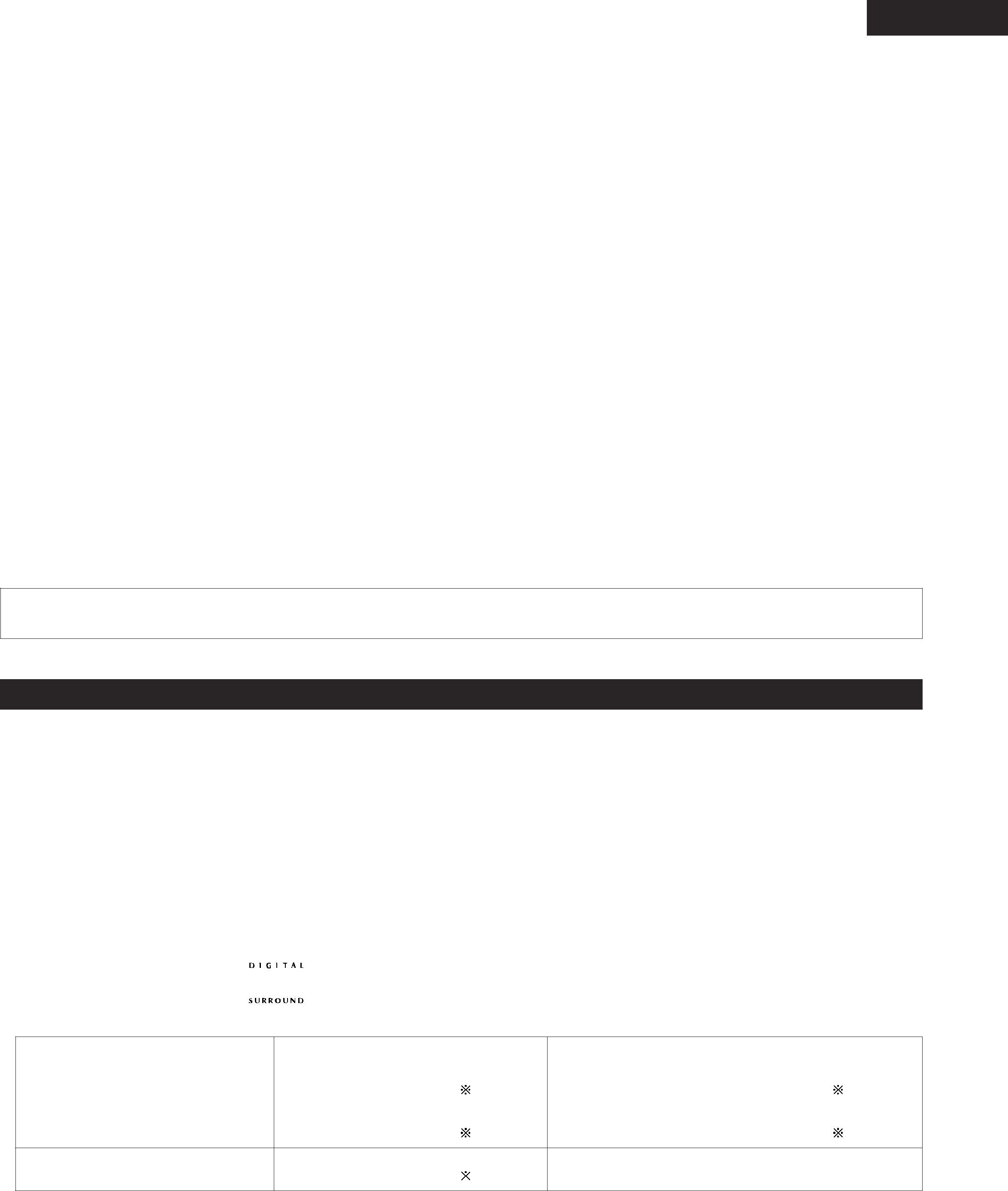
ENGLISH
(3)Dolby Pro Logic II
•Dolby
•Dolby Pro Logic II can be used to decode not only sources recorded in Dolby Surround ( 
 ) but also regular stereo sources into five channels (front left, front right, center, surround left and surround right) to achieve surround sound.
) but also regular stereo sources into five channels (front left, front right, center, surround left and surround right) to achieve surround sound.
•Whereas with conventional Dolby Pro Logic the surround channel playback frequency band was limited, Dolby Pro Logic II offers a wider band range (20 Hz to 20 kHz or greater). In addition, the surround channels were monaural (the surround left and right channels were the same) with previous Dolby Pro Logic, but Dolby Pro Logic II they are played as stereo signals.
•Various parameters can be set according to the type of source and the contents, so it is possible to achieve optimum decoding (see page 52).

 Sources recorded in Dolby Surround
Sources recorded in Dolby Surround
These are sources in which three or more channels of surround have been recorded as two channels of signals using Dolby Surround encoding technology.
Dolby Surround is used for the sound tracks of movies recorded on DVDs, LDs and video cassettes to be played on stereo VCRs, as well as for the stereo broadcast signals of FM radio, TV, satellite broadcasts and cable TV.
Decoding these signals with Dolby Pro Logic makes it possible to achieve
There are two types of DVD Dolby surround recording signals.
q
When either of these signals is input to the
2Sources recorded in Dolby Surround are indicated with the logo mark shown below. Dolby Surround support mark: 

Manufactured under license from Dolby Laboratories.
“Dolby”, “Pro Logic” and the
Digital Theater Surround (also called simply DTS) is a
DTS offers the same “5.1” playback channels as Dolby Digital (front left, front right and center, surround left and surround right) as well as the stereo
DTS features a relatively higher bit rate as compared to Dolby Digital (1234 kbps for CDs and LDs, 1536 kbps for DVDs) so it operates with a relatively low compression rate. Because of this the amount of data is great, and when DTS playback is used in movie theaters, a separate CD- ROM synchronized with the film is played.
With LDs and DVDs, there is of course no need for an extra disc; the pictures and sound can be recorded simultaneously on the same disc, so the discs can be handled in the same way as discs with other formats.
There are also music CDs recorded in DTS. These CDs include
2DTS compatible media and playback methods
Marks indicating DTS compatibility:  and
and  .
.
The following are general examples. Also refer to the player’s operating instructions.
Media | Dolby Digital output jacks | Playback method (reference page) |
| ||
CD | Optical or coaxial digital output | Set the input mode to “AUTO” or “DTS” (page 35). | |||
(same as for PCM) | 2 | Never set the mode to “ANALOG” or “PCM”. | 1 | ||
| |||||
|
|
| |||
LD (VDP) | Optical or coaxial digital output | Set the input mode to “AUTO” or “DTS” (page 35). | |||
(same as for PCM) | 2 | Never set the mode to “ANALOG” or “PCM”. | 1 | ||
| |||||
Optical or coaxial digital output
DVDSet the input mode to “AUTO” or “DTS” (page 35).
(same as for PCM) 
 3
3
61